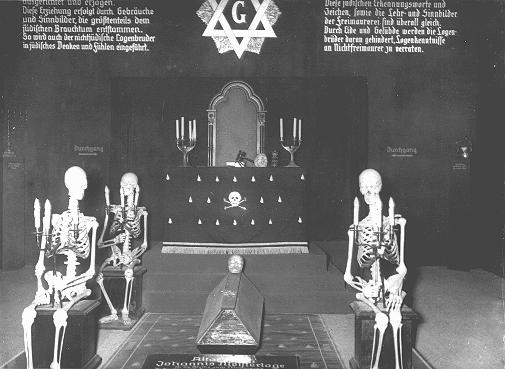We've all learned in history classes about World War II and how people of the Jewish faith were rounded up, imprisoned, and brutally tortured and killed by the Nazis, but what most people don't know is that the Freemasons were among those rounded up and systematically murdered by the Nazi war machine.
“During the Holocaust between ten and eleven million people were murdered by the Nazi’s, Jews accounted for approximately 5.7 million and the rest were non-Jews. Among the non-Jews were certain types of people such as Gypsies, Soviets, Polish Citizens, Jehovah’s witnesses and other political and religious opponents which included Freemasons. Nazi ideology believed that the “high degree” Masons were willing members of the Jewish conspiracy, and many of the Nazi’s believed Freemasonry was one of the causes of Germany losing the first World War.”[1]
Hitler strongly believed that the Jews and Freemasons in tandem controlled the press, which is evident from his book Mein Kampf,
“The general pacifistic paralysis of the national instinct of self-preservation begun by Freemasonry is then transmitted to the masses of society by the Jewish Press”[2]
To understand the hatred aimed at Freemasonry from the Nazi party, we have to begin by going back in time to World War One, at the time where the political and social consequences of Germany's humiliating defeat were beginning to take a toll on the German political landscape. “The responsibility for the war, the defeat, and the peace terms were blamed on the opponents of the war and on those politicians who favored the democratic process”,[3]and as we all are aware, a Masonic Lodge definitely operates on a democratic process. Despite this, the Lodges in Germany grew quite well until the Nazi party began seizing control of power in 1925, at which point there were more than eighty two thousand Masons and six hundred thirty two Lodges in Germany.[4]
German Lodges at this time were considered, “places of coalition for like-minded people, beyond political disagreement and economic misery”[5] and they did attract new members after 1925, yet they never had the social standing or clout that American or British Lodges had due to the growing atmosphere of anti-Semitic and anti-Masonic attitudes in Germany post 1925. Also, at that time Freemasonry in Germany was divided, because there were the Old Prussian Grand Lodges and the Humanitarian Grand Lodges. The Old Prussian Grand Lodges had deliberately excluded Jews from membership and the majority of their members were also part of the German Nationalist milieu. There was also a movement among the Old Prussian Lodges to drop the Jewish story-line for the degrees to make them more Aryan in nature. The Humanitarian Grand Lodges members were mostly members of political parties that were in the middle left of the political spectrum. Three of the eight Grand Lodges were Old Prussian and five were Humanitarian and the Old Prussian Grand Lodges were the oldest in Germany because they had secured Royal Patronage from their beginning.
“Most members of the Old Prussian Lodges and even some members of the few dogmatic Humanitarian Lodges did not find the central elements of the Nazi Party’s ideology to be contradictory to their Masonic beliefs. Instead, they found the ideology to be rather complimentary to their own understanding of Freemasonry. Before the Nazis came to power, the president of the German Freemason Association, Diedrich Bischoff, even suggested an inspiration of the “Third Reich” based on or through Masonic idealism.”[6]
At this time a man named Erich Ludendorff, the former chief of the German Army’s General Staff during World War One, became an outspoken critic of the fraternity, and openly attacked it, including his 1927 publication, “Exterminating Freemasonry by Uncovering its Secrets”. In this work he completely distorted and falsified the rituals of Freemasonry under the Grand National Lodge of Freemasons of Germany, and in it he claimed that Freemasons had training to become artificial Jews. “This defamatory piece of writing made all of the nine regular Grand Lodges in Germany agree with each other. On September 15, 1927, the Grand Masters published a declaration that rejected Ludendorff”s depiction of Freemasonry and described it as an “incitement to the German Nation” and “Misleading to the masses.” This was the only time when all of the German Grand Lodges would unite to counter an accusation of their nationalist enemies.”[7] This would have been a most difficult time to be a Freemason, because we are told to obey the laws of our country; however, when a country like Germany was undergoing a radically negative transformation in the two decades leading up to World War Two, this would have been an extremely difficult thing to do for any true and honest member of the craft.
On January 30, 1933, Adolf Hitler, the leader of the Nazi party, was appointed German Chancellor. At this point, the Grand Lodges of Germany were still very much estranged from each other, but they were well aware that they were facing an uncertain and dangerous future, because the Nazi’s had always been very hostile towards any kind of Freemasonry. In Hitler’s book, Mein Kampf, he claimed that “the Jew” used Freemasonry as an “excellent instrument” as the Fraternity was “completely under the Jews spell.”[8] By April 7, 1933, Herman Goring who was then the Nazi Minister of the Interior had met with the Grand Master of the National Lodge of Freemasons of Germany and a law was passed that would reorganize the Grand Lodge as follows:
1) “The Order will return to its original shape. From today on, the term National Lodge of Freemasons of Germany, which was taken on in the 18th century will no longer be valid. The order will henceforth have the name that corresponds with its nature: German Christian Order of the Grail of the Knights Templar.
2) With this decision, the order has ceased to be a Masonic corporation.”[9]
With the Creation of these new “German Christian Orders” the rituals of German Freemasonry had changed with it. This was something that the more nationally oriented Old Prussian, and a few of the Humanitarian Lodges, had wanted in the first place. With this edict in place, the Old Prussian Lodges replaced some of the Old Testament legends with Germanic legends and the mythology of the Holy Grail, the saga of the Germanic God Baldur took place of Hiram Abiff, and the Pillars were now named Light and Folk and were no longer Jachin and Boaz. The checkered floor no longer showed Solomon’s Temple but was now a representation of Germany’s Strasburg’s Cathedral.
It appears that the German Freemasons where desperately trying to hang on to Freemasonry as best they could, while at the same time trying to appease the laws of their country. However, even with concessions and changes, the noose continued to be tightened around the neck of Freemasonry, because on September 6, 1933 the regulations enacted the previous April were not only being harshly enforced, but a new ordinance was enacted:
“Brothers who are not of Aryan descent are to be honorably discharged from the order immediately, persons with Aryan descent are in this ordinance defined as persons whose parents and grandparents were Aryans, and for Brothers who are Jewish, point one will be enforced.”[10]










